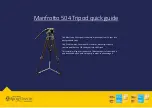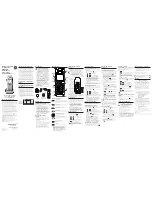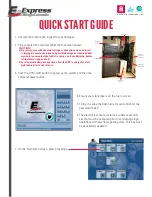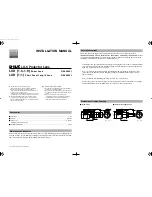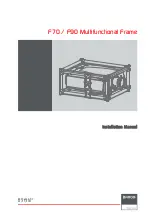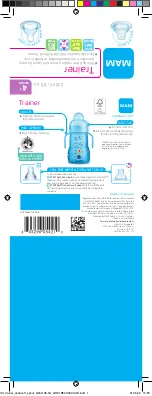
4
the traditional single bevel Japanese blade such as the sashimi blade must be sharpened and
stropped primarily on the front side of the blade which has the very large factory bevel (Bevel
A. See page 9 for further detail).
The Model 315S is equipped with a manually actuated diamond dressing pad that can be used,
if necessary, to clean any accumulated food or sharpening debris from the ultrafine abrasive
surface of the Stage 2 polishing/stropping disks. We strongly urge that you always thoroughly
clean your knives before sharpening them. Unless you are a heavy user, you should go months
or even a year or more before you need to dress the stropping/polishing disks. Only if you sense
a distinct decrease in polishing efficiency in Stage 3 is there any need to use this convenient
feature described on page 10.
Never
operate
the
sharpener
from
the
back
side.
Use just enough downward pressure when
sharpening to ensure uniform and consistent contact of the blade with the abrasive disks on
each stroke. Additional pressure is unnecessary and will not speed the sharpening process.
Avoid excessive cutting into the plastic enclosure. Accidental cutting into the enclosure however
will not functionally impact operations of the sharpener or damage the edge.
Try a practice pull through the sharpener
before
you turn on the power. S lip the knife blade
smoothly into the left slot between the left angle guide of Stage 1 and the plastic knife holding
spring. Do not twist the knife. Move the blade down in the slot until you feel it contact the
diamond disk. Pull it towards you lifting the handle slightly as you approach the tip. This will
give you a feel for the spring tension. Remove the knife and read the instructions specific to the
type of knife you will be sharpening.
SHARPENING THE CONTEMPORARY ASIAN KNIFE
Before sharpening your contemporary style Asian blade, refer to Description of Asian and
Euro/American blades, pages 9 and 10, to confirm that you do in fact have a double faceted
blade. All double faceted Asian blades are defined as contemporary blades. Most of the
popular Asian blades such as the Usuba (nakiri) and Santoku currently sold in the United States
are the double faceted contemporary design. If your double faceted knife is very thin at the
edge and it is relatively new it probably will not need to be pre-honed in Stage 1 before
polishing. Instead, start in Stage 2, which will strop and polish the edge with ultrafine
abrasives. Turn on the power switch and sharpen in Stage 2 as follows:
START BY STROPPING/POLISHING THE EDGE IN STAGE 2
a. Pull the blade through the left slot of Stage 2 (see Figure 2) and then through the right slot of
Stage 2. Make 2 pairs of pulls, alternating each pull in the left and right slots of Stage 2. You
should take about 3 to 4 seconds for each pull for a 5 inch (12 cm) long blade.
b. Then make 3 pairs of alternating faster pulls (about 1 second per pull for a 5 inch [12 cm]
blade) in Stage 2.













